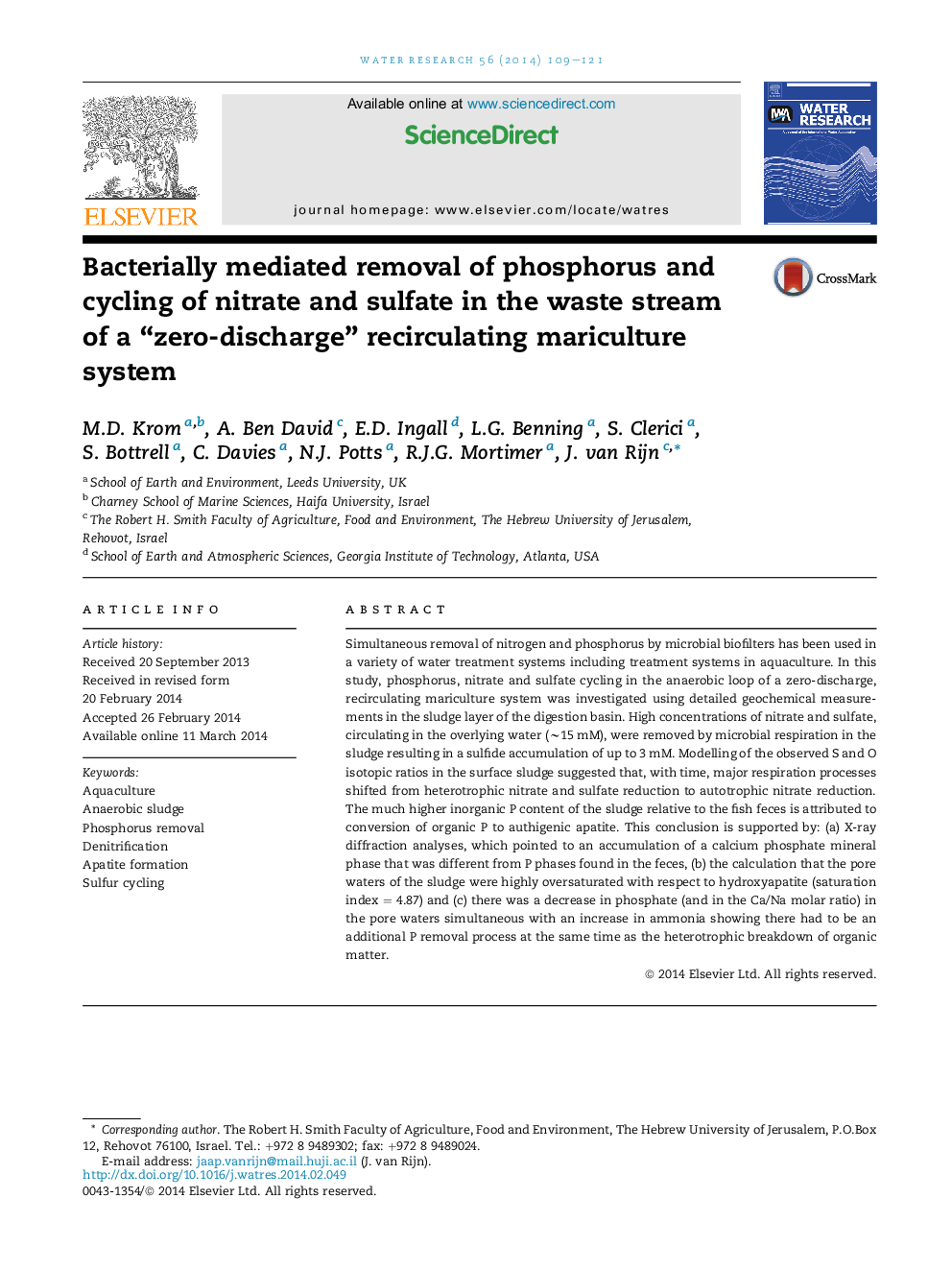| Article ID | Journal | Published Year | Pages | File Type |
|---|---|---|---|---|
| 6366883 | Water Research | 2014 | 13 Pages |
Abstract
Simultaneous removal of nitrogen and phosphorus by microbial biofilters has been used in a variety of water treatment systems including treatment systems in aquaculture. In this study, phosphorus, nitrate and sulfate cycling in the anaerobic loop of a zero-discharge, recirculating mariculture system was investigated using detailed geochemical measurements in the sludge layer of the digestion basin. High concentrations of nitrate and sulfate, circulating in the overlying water (â¼15 mM), were removed by microbial respiration in the sludge resulting in a sulfide accumulation of up to 3 mM. Modelling of the observed S and O isotopic ratios in the surface sludge suggested that, with time, major respiration processes shifted from heterotrophic nitrate and sulfate reduction to autotrophic nitrate reduction. The much higher inorganic P content of the sludge relative to the fish feces is attributed to conversion of organic P to authigenic apatite. This conclusion is supported by: (a) X-ray diffraction analyses, which pointed to an accumulation of a calcium phosphate mineral phase that was different from P phases found in the feces, (b) the calculation that the pore waters of the sludge were highly oversaturated with respect to hydroxyapatite (saturation index = 4.87) and (c) there was a decrease in phosphate (and in the Ca/Na molar ratio) in the pore waters simultaneous with an increase in ammonia showing there had to be an additional P removal process at the same time as the heterotrophic breakdown of organic matter.
Keywords
Related Topics
Physical Sciences and Engineering
Earth and Planetary Sciences
Earth-Surface Processes
Authors
M.D. Krom, A. Ben David, E.D. Ingall, L.G. Benning, S. Clerici, S. Bottrell, C. Davies, N.J. Potts, R.J.G. Mortimer, J. van Rijn,
